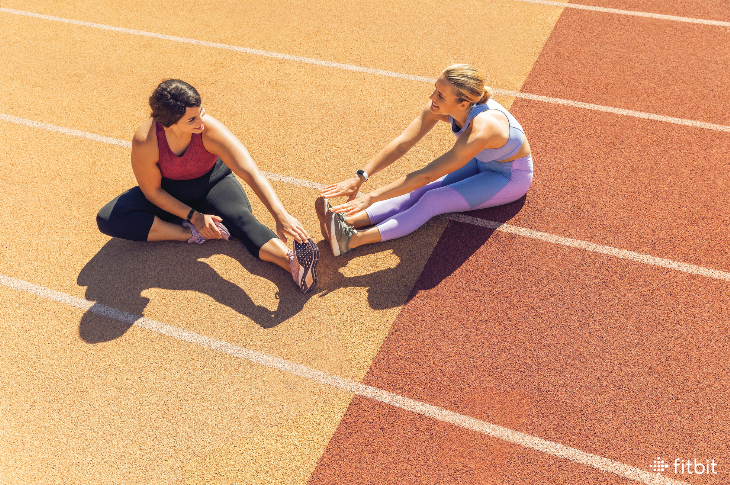
You’re all set to exercise, so you walk out your front door, go on a three-mile run, then quickly shower and get on with your day. Does this sound familiar? If you’re the kind of person who tends to focus on the actual workout and never really bother to warm up before or cool down after, you may want to rethink your approach. That’s because regularly doing pre- and post-workout routines is key to feeling your best and avoiding injury.
First Things First: The Importance of Warming Up
“Warming up prepares your body for the work you’re about to do,” says Jeffrey Prichard, a performance specialist at Bridge Athletic, which programs workouts for teams and clubs across the country. “It raises your body temperature and increases blood flow to your muscles.” Those two things will help you perform better during your workout and reduce your risk for injury.
“When you start a workout, you put physical stress on your body,” says Nick Savin, a personal trainer at Equinox in Chicago. “If you don’t warm up properly, you’re more likely to tear a muscle, sprain a joint, or slip a disc in your back.” Prichard likes to compare muscles to a rubber band. If it’s cold and you try to stretch it, it’s more prone to snapping or tearing. But warm it up first and you can stretch it to its full range of motion. Studies also show that warming up can reduce how sore you feel in the days after a tough workout (what’s known as delayed onset muscle soreness).
So how should you go about it? Think about moving your body to loosen everything up. “The old idea of static stretching before a workout is outdated—you want to get your body in motion and get your heart rate and body temperature up,” says Prichard. Start with light cardio like jumping jacks or an easy jog. Then move on to some mobility work, like walking lunges, leg swings, or torso rotations. Lastly, if you’re planning on strength training, do easier versions of the moves you’re going to do in the workout. So if you’re going to perform deadlifts, mimic the same motion a few times without a barbell.
Ending on a High Note: The Importance of Cooling Down
It’s natural to want to get on with your day as soon as you wrap up the workout, but build in a few minutes for a cool down. “Without a cool down, blood may pool in the lower extremities and muscles and blood pressure stays high,” says Savin. “Cooling down properly allows the body to reverse those effects and remove waste from your muscles, optimizing recovery and reducing pain in the coming days.”
The key here is gradually going down in intensity. If you were swimming, take a few easy laps. If you ran, switch to a jog or walk. You’re good to go when your heart rate and breathing feel closer to normal. Lastly, wrap it all up with some stretching. “You’ve primed your muscles already and everything’s loose, so now is the perfect time to increase your range of motion,” says Prichard.
This information is for educational purposes only and is not intended as a substitute for medical diagnosis or treatment. You should not use this information to diagnose or treat a health problem or condition. Always check with your doctor before changing your diet, altering your sleep habits, taking supplements, or starting a new fitness routine.

If you have questions about a Fitbit tracker, product availability, or the status of your order, contact our Support Team or search the Fitbit Community for answers.
Please note: Comments are moderated and may not appear immediately after submission.